Growing Herbs Indoors: A Simple Way to Add Fresh Flavor (and Greenery) to Your Life
Affiliate links may be used in this post and if so I will receive a commission at no extra cost to you. I’m also part of the Amazon Affiliate (Associate) program where I earn a commission from sales made through my affiliate links. Find my full disclosure policy by clicking here.
Last Updated on May 22, 2025 by Nell Marie
Let’s talk about indoor herb gardening. If you’ve ever thought, “It would be so nice to just snip some basil or parsley from the windowsill while cooking,” you’re absolutely right—and it’s totally doable. You don’t need a greenhouse, a big backyard, or even a ton of experience. Just a little sunlight, a few pots, and some patience.
Save on Pinterest
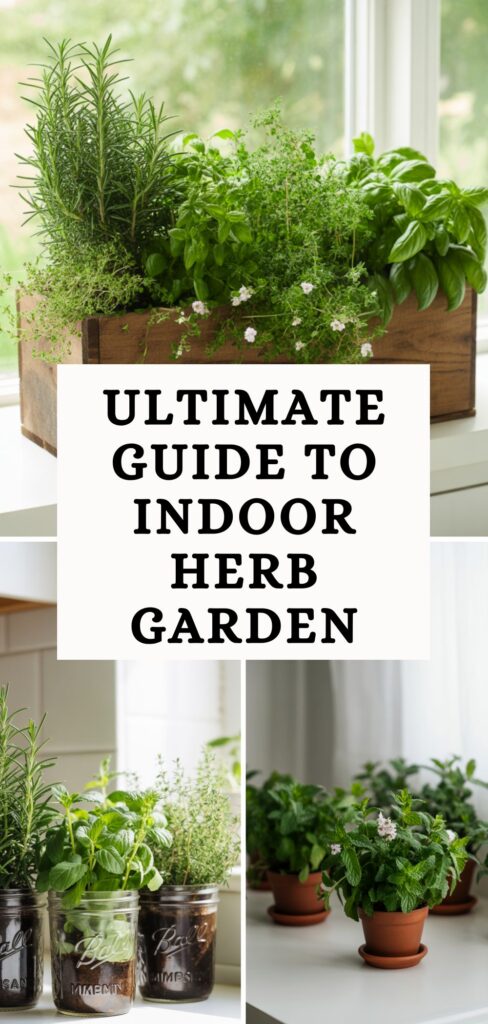
Indoor herb gardening is one of those things that feels a little magical. You’re growing your own food—right in your kitchen or living room. And the best part? You don’t need a lot of space. Even a sunny windowsill can be enough to keep your herbs thriving.
It’s also a fun way to dip your toes into gardening without the overwhelm. You don’t need to be an expert, and it won’t take over your schedule. Just a few minutes of care here and there, and you’ll have fresh herbs at your fingertips.
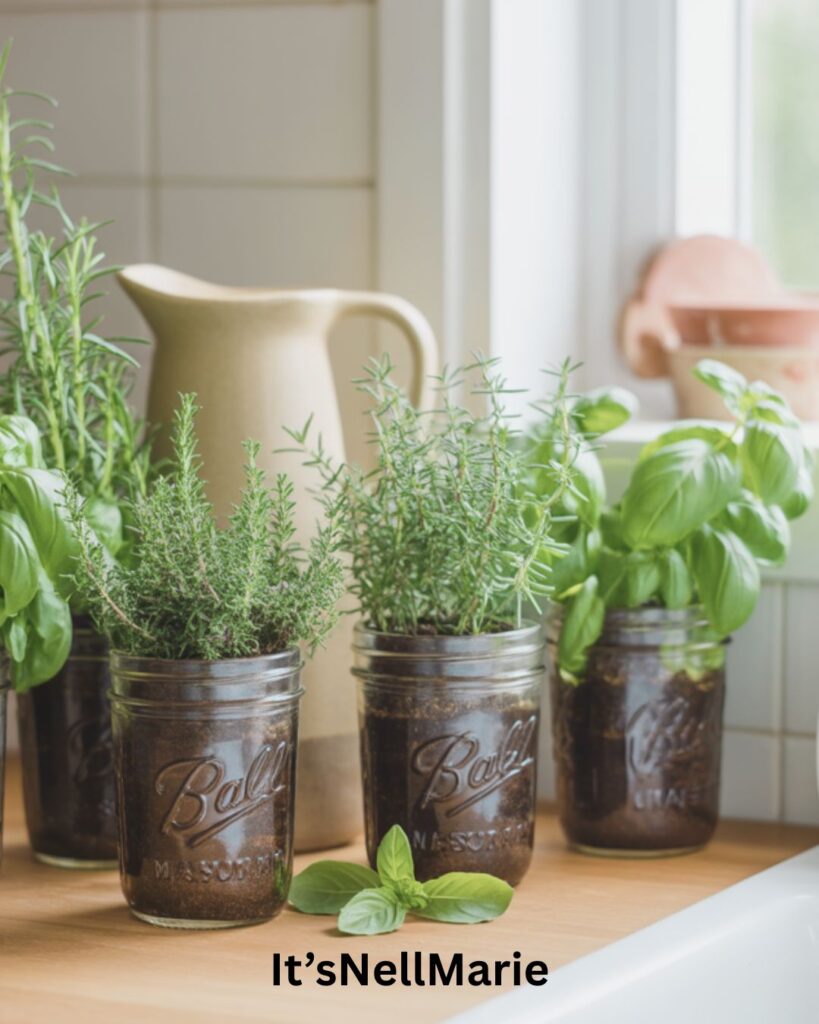
Getting Started with Herb Gardening: What You Actually Need
To start growing herbs indoors, you only need a few basic things:
- Pots with drainage holes
Herbs don’t like “wet feet,” so proper drainage is essential. You can use small terracotta pots, ceramic planters, or even cute containers you already have—just make sure water can escape. - A tray or saucer
You’ll want something under the pots to catch any extra water and protect your surfaces. - Quality potting soil
Use a light, well-draining potting mix. Avoid using garden soil, which can be too heavy and may carry pests indoors. - A sunny window or grow light
Most herbs like 6-8 hours of sunlight a day. A south-facing window is ideal. If you don’t have one, a simple grow light can keep your plants happy. - Herbs, of course!
You can start from seeds or small starter plants. Starters are quicker and easier, especially for beginners.
Easiest Herbs to Grow Indoors
You don’t have to grow a huge variety right away. Starting with 2-3 herbs is perfect. Some are definitely more beginner-friendly than others, so here are a few tried-and-true favorites:
🌿 Basil
Basil loves warmth and sunlight, and it grows quickly. You’ll need to pinch it back often to keep it from flowering. It’s a great choice for pasta, pizza, or salads.
🌿 Chives
These are super easy to grow indoors and don’t need much fuss. They come back quickly after each trim and are perfect for topping eggs, potatoes, and soups.
🌿 Parsley
Parsley is a bit slower growing, but it does well indoors with regular watering and good light. You can grow curly or flat-leaf varieties.
🌿 Thyme
This hardy herb does well in pots and thrives with less frequent watering. It’s compact and looks lovely on a windowsill.
🌿 Mint
Mint is extremely easy to grow but loves to spread. Keep it in its own pot to avoid crowding out other herbs. It enjoys moderate light and moist soil.
🌿 Rosemary
This one’s a little pickier—it needs a lot of sun and excellent drainage. But the scent is amazing, and it adds a wonderful flavor to roasted dishes.
🌿 Oregano
Oregano enjoys full sun and thrives when trimmed regularly. It’s one of the easiest herbs to grow and is great for Italian and Greek dishes.
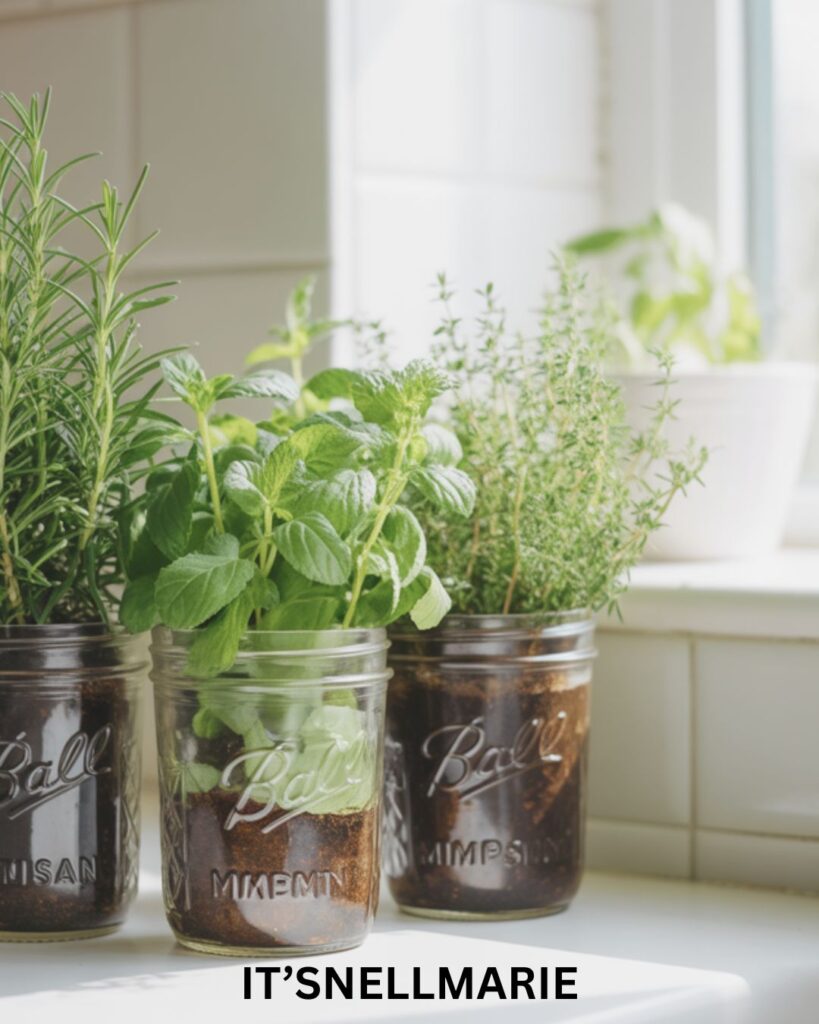
Watering and Feeding Your Herbs
Here’s the key thing about watering: don’t overdo it. It’s easy to assume herbs need water daily, but that’s usually not the case indoors. Most herbs prefer the soil to dry out slightly between waterings.
Tips for watering:
- Stick your finger into the soil about an inch deep. If it’s dry, it’s time to water.
- Water thoroughly until you see it come out of the drainage hole, then let it drain completely.
- Empty the saucer under the pot if any water pools—don’t let the roots sit in water.
Pro tip: Group herbs with similar watering needs together to make your life easier.
You can also feed your herbs occasionally with a gentle, water-soluble fertilizer. Look for something labeled for edible plants, and don’t overdo it—once a month is plenty during the growing season.
Light Requirements
Light can make or break your indoor herb garden. Most herbs love full sun, but if your windows don’t get enough, you can still grow herbs with the help of grow lights.
Options for lighting:
- South-facing window: Gets the most direct sunlight.
- East or west-facing window: Good for morning or afternoon sun, which works for many herbs.
- Grow light setup: Use an LED grow light and place it 6–12 inches above your plants. Aim for 12–14 hours of light a day if they aren’t getting natural sun.
If your herbs start growing tall and “leggy,” it’s usually a sign they’re stretching for more light.
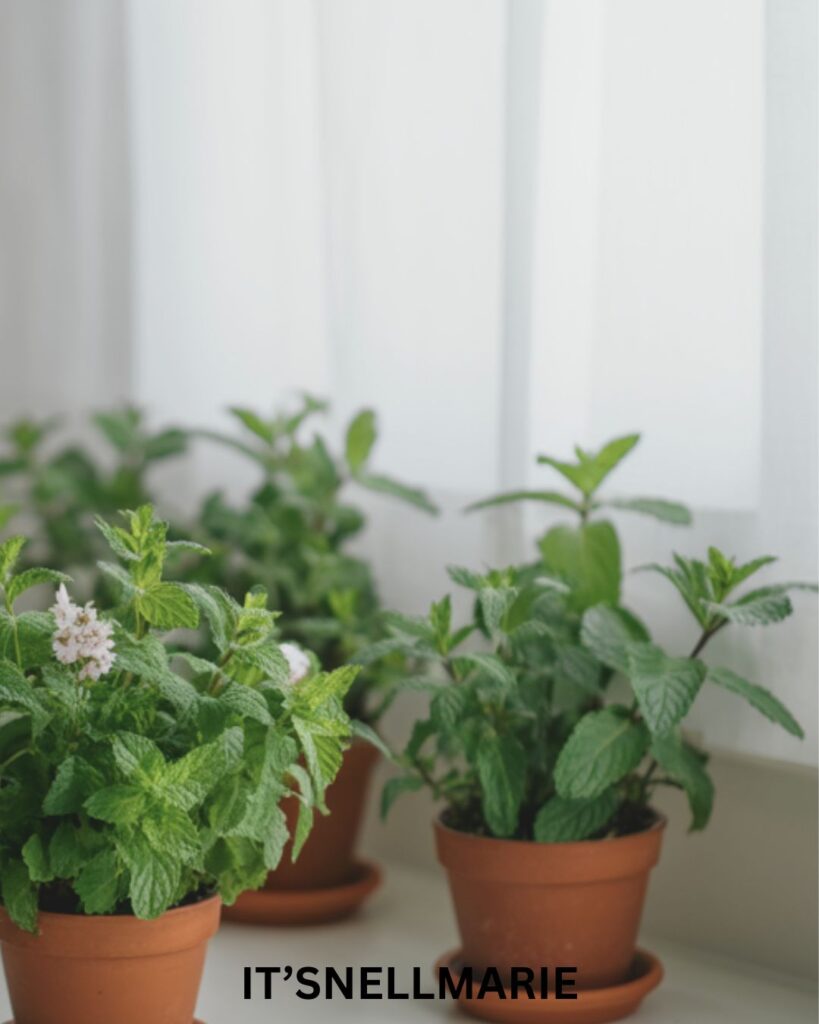
Harvesting Tips: How to Keep Herbs Growing
It’s tempting to snip away as soon as you see growth, but letting your herbs get established will help them last longer. Once they’re about 4–6 inches tall, you can start trimming.
Here’s how to harvest properly:
- Don’t take more than 1/3 of the plant at a time.
- Use clean scissors or pinch with your fingers.
- Trim above a set of healthy leaves—this encourages the plant to grow bushier.
For basil: Always pinch off flower buds when they appear to keep the plant producing tasty leaves.
Common Indoor Herb Gardening Problems (And Easy Fixes)
Things can go wrong sometimes, but most issues are easy to troubleshoot. Here are a few common ones:
- Yellow leaves: Usually a sign of overwatering or poor drainage.
- Leggy growth: Your plant needs more light—move it to a sunnier spot or add a grow light.
- Drooping: Could mean either too much or too little water. Check the soil.
- Moldy soil or fungus gnats: Water less often, improve air circulation, and try cinnamon on the soil to prevent mold.
Keep an eye out and adjust as needed. Plants are pretty good at showing you what they need once you know what to look for.
Indoor Herb Garden Setup Ideas
You don’t need a fancy setup, but it’s fun to get creative with how you display your herbs. A few easy ideas:
- Windowsill planter box: Long and narrow, perfect for growing 3–4 herbs side by side.
- Hanging pots: Great for saving counter space.
- Mason jars: Cute and compact, but make sure to add pebbles at the bottom for drainage.
- Wall-mounted shelves: Add a bit of greenery to your kitchen wall while keeping herbs within reach.
You can even repurpose containers you already have—just make sure there’s drainage or add stones at the bottom to keep roots from sitting in water.
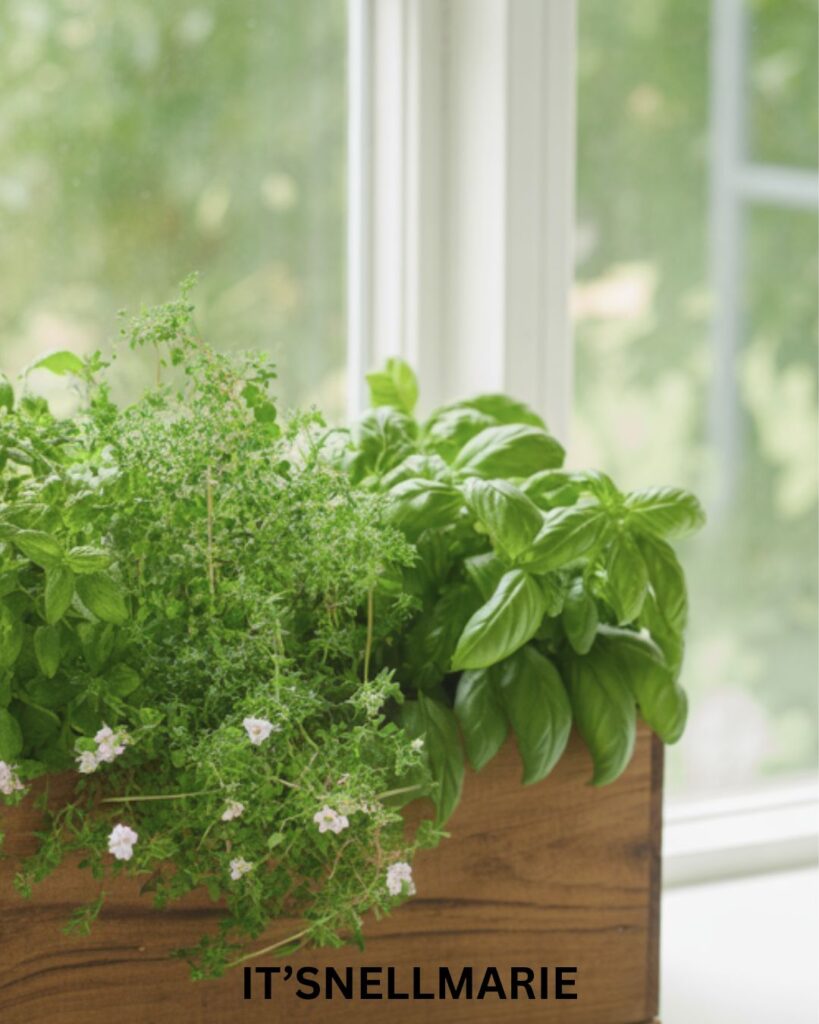
Why Indoor Herbs Are Totally Worth It
Besides being practical (hello, free herbs), having a little indoor herb garden just makes your home feel more alive. It adds greenery, brings nature indoors, and gives you something satisfying to care for. Plus, nothing beats the freshness of snipping herbs right before using them.
And let’s not forget:
- You save money – Fresh herbs at the store can be pricey and often go bad quickly.
- You reduce waste – No more buying a whole bunch of parsley when you only need a little.
- You get fresher flavor – Herbs taste better when harvested just before cooking.
Even a single pot of basil can make a difference in your kitchen. And once you get the hang of it, it’s easy to expand and add more.
Final Thoughts
If you’ve been thinking about growing herbs indoors, I say go for it. You don’t need to be a gardening expert or have tons of space. Just a few pots, some sunlight, and a little attention are all it takes to start your own mini herb garden.
Start small—maybe with basil and mint—and grow from there. Before you know it, you’ll have a little green oasis that smells amazing, looks lovely, and adds fresh flavor to everything from soups to salads.
There’s something really rewarding about using what you’ve grown with your own two hands, and herbs are one of the easiest ways to get started. So pick your favorites, find a sunny spot, and dig in—literally.
Save on Pinterest

